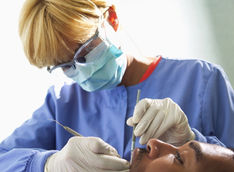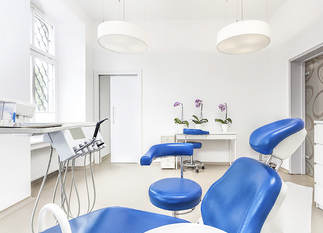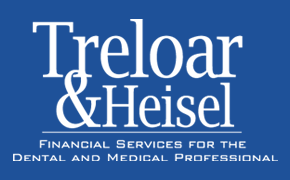Are more general practitioners keeping more procedures in house rather than referring them out?
That’s what some numbers compiled from Sikka Software data suggest.
Looking at the quantity of oral and maxillofacial surgeries per practice per month, numbers have risen sharply since 2010. A common theory floated about shortly after the 2008 recession was in full effect was that dental practices would keep more procedures in house in order to not lose the production. These numbers seem to buoy that theory.
In order to find these average numbers, we extracted data from Sikka Software that has been collected from more than 12,500 dental practices from around the United States.
Below are the average number of oral and maxillofacial surgeries per practice per month..
2010 – 24.92
2011 – 26.25
2012 – 26.5
2013 – 27.75
2014 – 29.5
2015 – 30.75
2016 – 29.25
How were these numbers tabulated? Sikka Software extracted data from each practice using the practice’s practice management software and specifically looking for one or more of more than 130 codes ranging from D7000-D7999 (oral and maxillofacial surgery section of the American Dental Association’s CDT codes). These codes include procedures such as extractions, biopsy of oral tissue and surgical extraction of lesions.
 Maybe you’re looking at this area of your practice and wondering how you can boost your numbers? Some of it may involve the extraction of teeth for implant placement. Some of it may involve oral cancer screenings. Boosting this area of your practice could mean it’s time to look at your treatment mix and see what you’ve added in recent years.
Maybe you’re looking at this area of your practice and wondering how you can boost your numbers? Some of it may involve the extraction of teeth for implant placement. Some of it may involve oral cancer screenings. Boosting this area of your practice could mean it’s time to look at your treatment mix and see what you’ve added in recent years.
Dr. Roger Levin recently talked about this in a recent Dental Economics article when talking about Phase II of a dentist’s career. You can read the entire article where he describes all three phases of a dentist’s career by clicking here. Link to http://www.dentaleconomics.com/articles/print/volume-94/issue-6/features/how-to-grow-your-practice-without-bursting-it-at-the-seams.html
“In Phase II, dentists become busy and reach a plateau where the practice is at an artificial full capacity and further growth becomes difficult. Unfortunately, these plateaus are significantly below the real production potential of the practice. The practice is busy, but mostly because it is not running as efficiently as it could, and therefore, not maximizing production. Once a practice is running at what is perceived as full capacity, the dentist usually has little time to devote to devising management systems to work smarter, not harder.
“Due to a limited education in business, most dentists do not fully understand how to implement effective practice-management systems. Therefore, they cannot make the changes necessary to help the practice reach its full potential.
“In Phase II, the practice is in a plateau with slight periodic growth. This periodic growth does not come from better systems, but rather from fee increases or occasionally adding new services. This potential growth is diminished in a challenging economy.”
Perhaps it’s time for you to look at your treatment mix, not only in terms of what you’re offering but also when is the last time you added to your offerings. Also, are you telling your patients what you can offer to them?
It’s important to not only know your numbers but also know what is producing those numbers in your practice.
Source – This article was provided for reprint by SIKKA Software. SIKKA is the leading provider of business intelligence software for the dental industry. The Dental Accounting Association, and the Dental CPA’s within this association, utilize SIKKA intelligence software to provide dental practice profit coaching and identify key insights for production improvement.
 on a daily basis. When you consider that the dental practice is a business and the dentist is the highest-paid employee of that business, it’s important that the dentist is producing at a high level.
on a daily basis. When you consider that the dental practice is a business and the dentist is the highest-paid employee of that business, it’s important that the dentist is producing at a high level. Keller also believes having a strategic plan is critical for today’s dental practice. “You have to have a plan in place to monitor this information,” she said. “You need to be asking questions like, ‘Where are we spending our money each month?’ ‘What can we modify or change if necessary?’ ‘What adjustments do we need to make in our spending to keep costs in line or what specific things can we improve upon to increase our production?’”
Keller also believes having a strategic plan is critical for today’s dental practice. “You have to have a plan in place to monitor this information,” she said. “You need to be asking questions like, ‘Where are we spending our money each month?’ ‘What can we modify or change if necessary?’ ‘What adjustments do we need to make in our spending to keep costs in line or what specific things can we improve upon to increase our production?’” Source – This article was provided by Christian Pearson, National Director of Dental Partnerships at Treloar & Heisel.
Source – This article was provided by Christian Pearson, National Director of Dental Partnerships at Treloar & Heisel.  To find these numbers, we took data from Sikka Software that has been compiled over the last seven years. The data we are using for this comparison has been collected from more than 12,500 dental practices from around the country.
To find these numbers, we took data from Sikka Software that has been compiled over the last seven years. The data we are using for this comparison has been collected from more than 12,500 dental practices from around the country.
 Join us to learn how to better protect dentists from financial threats and risk.
Join us to learn how to better protect dentists from financial threats and risk.